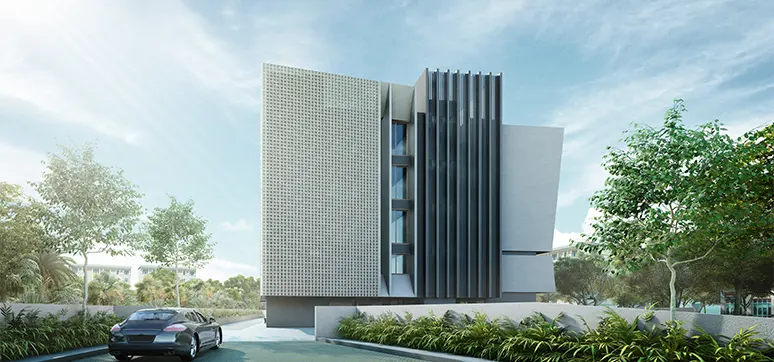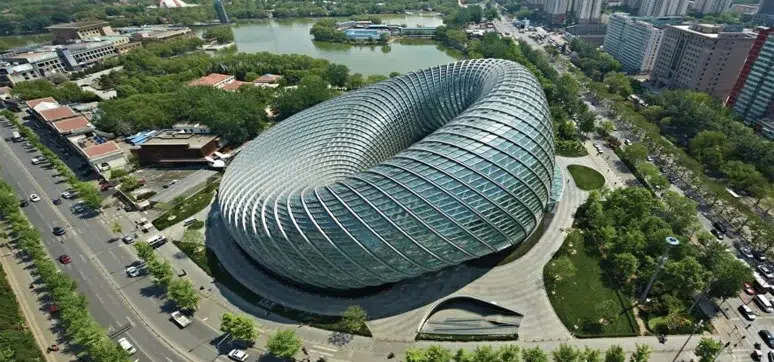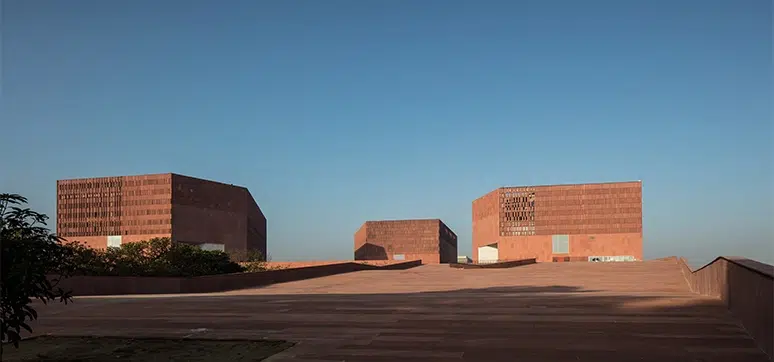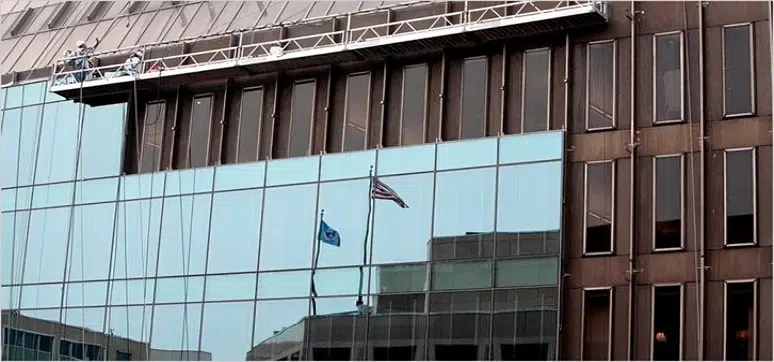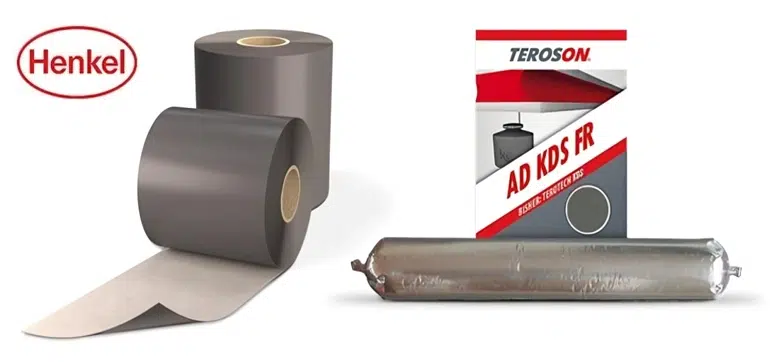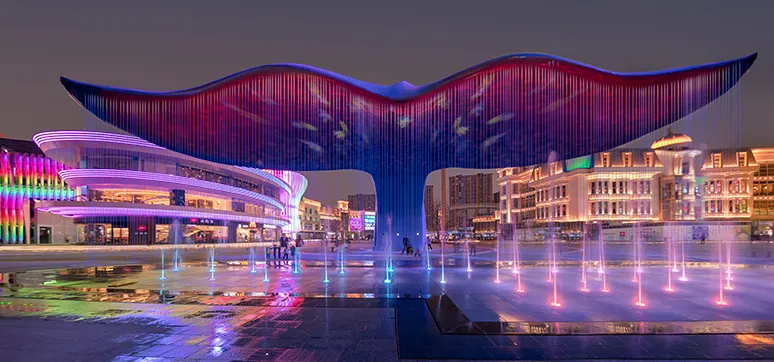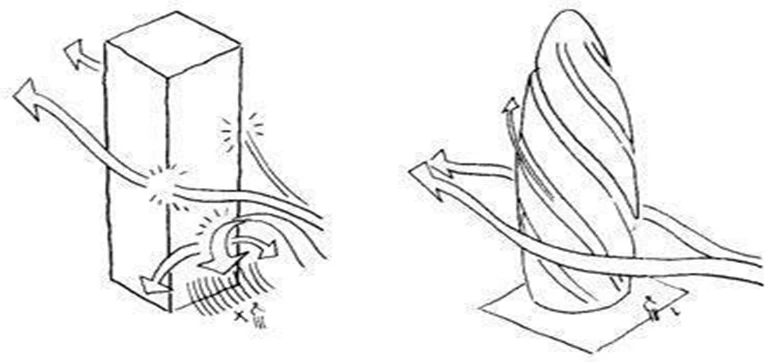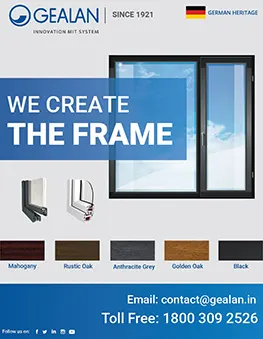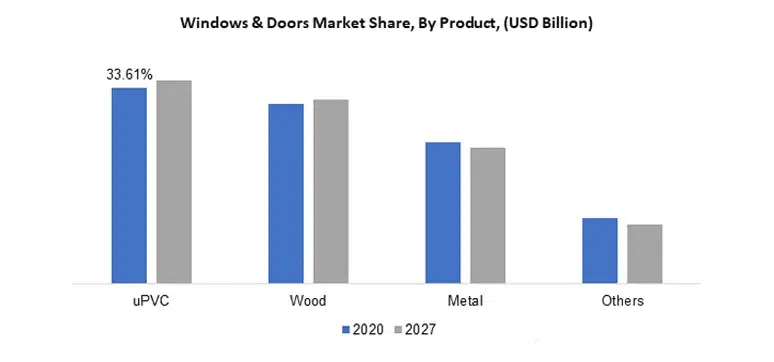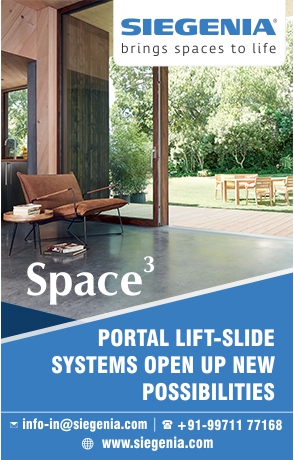Efficient Facades for Airports
By:
Audaciously sculptural or pared down pristine. India’s great feats of architectural ingenuity are pushing the field in bold new directions. Designing energy-efficient terminals that have a long-lasting effect on the environment and passengers alike is the definition for new-age terminal designs. Creative Group, one of the leading Architecture and Engineering Consultancy firms in India, has demonstrated that large expansive public concourse within an airport terminal assists to alleviate a passenger’s sense of being crowded while still accommodating the flow of arrival, departing and connecting passengers. Extensively designed facades within the spaces of Airports in Chennai, Raipur, Goa and Vaodadara are thought products Design of a sustainable endeavour by the design team.
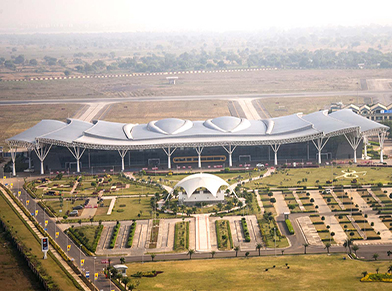
“The facades that we have designed for all these airports allow natural light to filter through the skin of the terminal thus providing passengers the delight of experiencing exterior views and better way finding. In this way, we also maximize daylight and minimize heat gains thus breaking the myth that airports are massive energy guzzlers,” says Prof. Charanjit Shah, Founding Principal , Creative Group
Facades and Building envelopes – portray an architect’s creative lintent. A thoughtfully designed skin can make a new building work wonders, through efficient performance for its users and the environment, and the architects have displayed a similar intent in the airport designs.
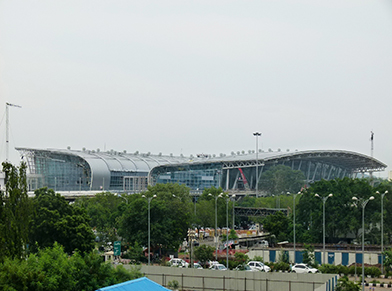
Furthermore, the façade of such buildings that require consistent energy consumption, not only give shape and add an impressive elevation to the structure, rather it is on the efficiency of such facades (calculation of heat flow) that HVAC equipment and system sizing is based on. If a façade system helps the building with less heat gain, the air- conditioning system uses less energy in order to cool the building; therefore an energy efficient façade needs to have a high thermal performance.
Architecture thrives on creative ideas and bold solutions that fascinate and surprise the cityuser’s experience each time. Understanding the properties of building materials before, during and after construction is the key to achieving a high performing façade. However, the actual implementation of these measures requires knowledge and experience in the exact requirements of a particular airport, as is evident from Creative Group’s style of architecture in each terminal, setting it apart from the other.

Architecture at its visionary best exhilarates and inspires. It is a field that embodies design ingenuity, creating places and most importantly imagination. But today’s architectural buildings are not just meant to be admired from a far; rather they have become this intelligent place of moulding itself in a manner most suitable for its user.
The new Domestic and International Terminals facades are made up of over 40,000 sq mt of glass, equating to 14,000 bespoke panels. Facades need to perform specific functions like monitoring the potential for overheating in summer. To help manage the temperature, the glass is coated with a film which controls the amount of sunlight entering the terminal. Fifth generation double silvered low e-coated glass with high light transmission and low power consumption, very low external reflection and very high transparency was the perfect solution to wrap the world-class terminal with.
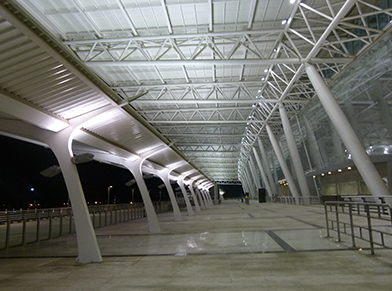
Each facade is predominantly glazed to allow greater transparency through the building and clear views of the airfield and the surrounding city side. Maximizing the use of natural light also contributes to the energy efficiency of the building.
Further, the Double Laminated DGU (86.4 – 24 – 68.4) is the glazing combination that provides suitable acoustic comfort to the passengers within the terminal.

The efficiency of the terminal can be attributed to its meticulously planned spaces. The H-shaped plan is what forms the very genesis of this sustainable terminal. Creating seven visible facets accentuated by the remarkable incorporation of a responsive façade design, transparent ingress were created to the terminal as compared to the conventional four façade system in an ordinary terminal. Not only did it bestow the passengers with green landscape views, breaking the monotony created by security processes inside the busy airport, but also ample daylight reached every nook of the building. This planning strategy clearly exemplifies that “Even Big can be sustainable”.
“Further, the planning of the airport is laid on the foundation that as sustainability is sowed, sustainability will grow. By implementing facets of sustainability in every quarter of building design and planning, the green terminals are pillars of sustainability,” explains Ar. Gurpreet Shah, Principal Architect, Creative Group The airport has prudently used glass to create a visual treat while being functionally superior and ultimately enhancing the user experience.

The high-performance glass provides excellent solar control that increases occupant comfort and reduces traveller fatigue, air conditioning & artificial lighting cost. Also, the coloured & lacquered glass, SGG Planilaque, greatly adds to the aesthetic value, making the Chennai International Terminal, truly international.
Not only inspiration was taken from the traditional sustainable strategies, but also many new innovations in design and construction were carved on the way. The resultant is a path breaking terminal, with unmatched parallels in sustainable design successful through the incorporation of an intelligent façade system.
The integrated terminal is an elegant modern structure defined by a high-tech aerodynamic building offering a smooth transition to its passengers from the flight to the city. Its organic form deriving its genesis from an “Avian” is conceived with a sliced dome at the centre and multiple wings elevating the roof profile towards the sky. The slicing of the roof profile maximizes the daylight, while emitting light in the sky making it visible at night. The design of the terminal building, liaise emphasis on the vastness of spaces, the visual experience of the sky and the subtle landing on the ground with the terminal building as a catalyst integrating all three.

Integration of an efficient façade glass and skylights that act as an extension to the glazed envelope further accentuated through reflective metal panelling supported on steel frames, enable the terminal to achieve large wide open spaces with natural light in abundance. The architects vision and creativity in double curves have been creatively realized through the designing of the glazed aerodynamic. Having used High performance tinted toughened glass, Multicellular insulated translucent panels of skylights,
accommodating a largely span-spaced roofing system and the curb side canopy done with polycarbonate sheets, lends an extremely symbolic and high-tech appearance to the built form. The rear side of the air-side corridor is designed to be evolved from a “spaceship” which is attained using a louvered tube form.
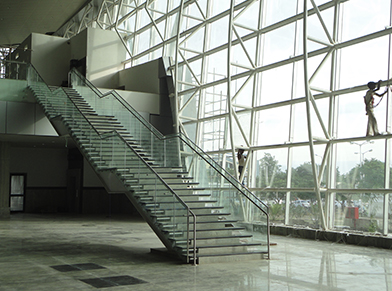
“The façade treatment of any structure is designed and executed to meet appropriate facilities for maintenance in the long term. Quality of supervision, adherence to specifications and coordinated efforts from a qualified façade engineer is most important during the designing and execution of such mega scaled projects,” illustrated Mr. Prabhpreet Shah, Executive Director, Creative Group.An amalgamation of intelligent use of materials and technology, the façade of the terminal, is adorned with structural glaz¬ing, resulting in an array of sleek “bow trusses”. Spanning 15m high and 180m long, the inclined glass façade, lends a unique translucent appearance, visually welcoming the passengers into this structural marvel.
The specially designed hinged connection at base allows constructability and takes care of the rotational moment generated due to wind. Another element that adds to the glorious avian terminal is the Yellow-hued ticket counter that elegantly lies at the centre of the terminal façade framed with stone cladding on either ends of the front elevation. The passengers are welcomed to experience the changing hues of the terminal through flaring arms of the tree-columns that during the day mark their reflection on the glazed façade further dissolving the landscape interior to the landscaped exterior of the avian.
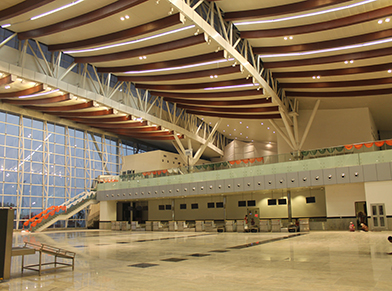
The building has a long glass façade which gives the building transparent and modern look, and has a solid roof with sleek skylights which is free flowing, resembling a wave and hence the proximity to the sea. A specially made FACETED GLASS – double glass unit with a protective film is specifically made for this terminal which provides the much needed thermal and sound insulation. The building form developed is very simple and bold. It is free flowing and curvilinear in one direction. The use of steel in the main structure also enhances the modern image of the building.
The New Integrated Terminal at Vadodara Airport is a sleek contemporary structure and a reflection of the start of sustainable yet modernistic movement in India.

The most prominent structural feature for the New Integrated terminal is an arching, sweeping roof that spans the entire length of the terminal. Inspired by the body and wings of airplanes, the building’s bold sweeping form and identity is achieved by wrapping the East and West sides and the roof with one continuous aerodynamic metal skin. This homogeneity of the structural design depicts artistic and engineering amalgamation between efficient façade design and the roof. The symbolism remains the visual and architectural flow of the terminal’s design.
Careful analysis of the building’s orientation has relented its design and unique form. A large overhang on the North (landside) shelters the transparent facade while shading and protecting passengers along the kerbside.
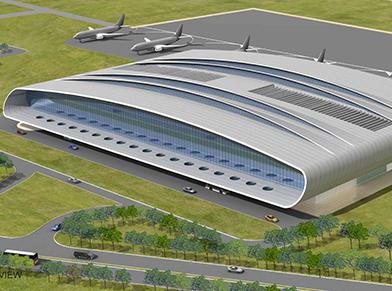
This profile then creates an overhang on the South (airside) so that the panoramic glass curtain wall is completely shaded from the strong sun. The volumetric proportion of the interior spaces combined with filtered natural light from skylights above and the sound of flowing water will activate and enliven the experience inside the terminal. The Skylights follow the geometry of the trusses further opening the structural framework to allow natural light to permeate the terminal interiors.
However, it is alarming to note the sudden movement of adoption of curtain walls from the west, irrespective of the climate condition of the region. Hence, any architectural building, any diverse design is one which mimics the climate and its very moods, moulding itself in the most appropriate manner for the user. And one component that can truly give shape to such a structure is the intelligent design and execution of the façade/the skin of the building.
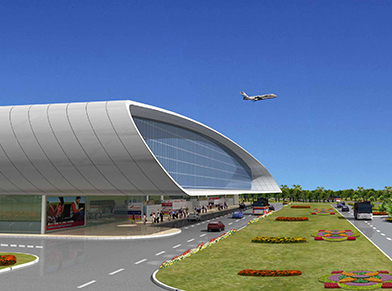
Gone are the days when airports were nothing more than a stopover between the journey and destination.
Today, with cross-continental travel being stressful enough, airports need to create an atmosphere of calm & comfort, a place where one can reduce the fatigue & stress that comes with travel. And The New age Airport designs, along with efficient façade designs, are bound to do just that.
Top Stories
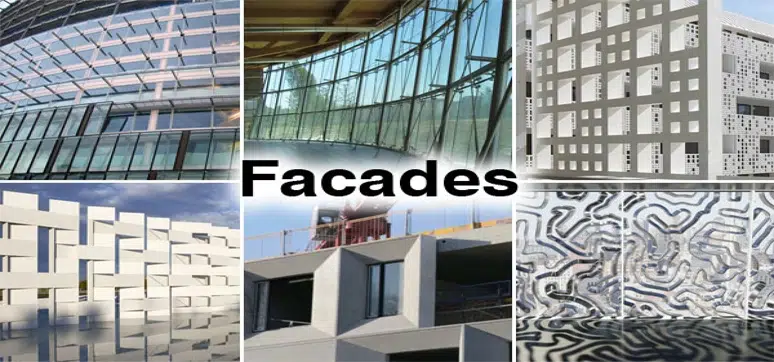
Façade Systems Market Size is Estimated to Reach USD 398.8 Billion by 2029
By: Abdul | April 16, 2024
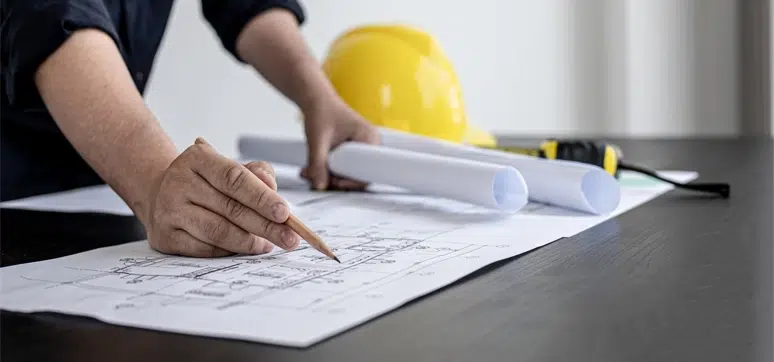
Improving Sustainability Alongside Fire Safety – Can We Deliver?
By: Abdul | April 16, 2024
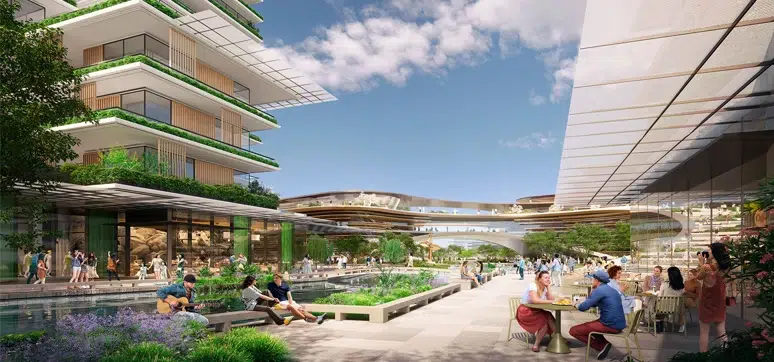
Foster + Partners Wins the Competition the New Xicen Science & Technology Centre
By: Abdul | April 9, 2024
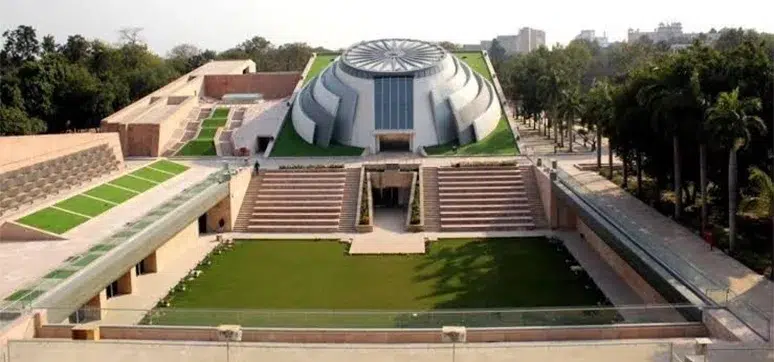
A Symbol of Architectural Brilliance & Cultural Significance
By: Abdul | April 8, 2024


